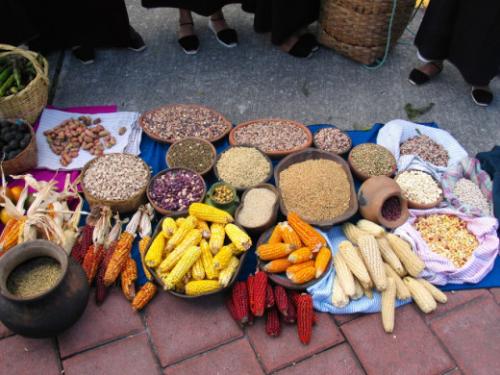Implementing Farmers’ Rights Relating to Seeds
- Opinión

The concept of Farmers’ Rights recognized the role of farmers as custodians of biodiversity and helped to draw attention to the need to preserve practices that are essential for sustainable agriculture. This paper examines one particular aspect of such rights, perhaps the most controversial. It deals with the component of farmers’ rights referring to the use, exchange and sale of farm-saved seeds. Although that concept was initially introduced in 1989 with the aim of balancing the rights of farmers as breeders and of commercial plant breeders, a specific reference to the rights relating to seeds was only introduced upon the conclusion of the International Treaty on Plant Genetic Resources for Food and Agriculture (ITPGRFA) in 2001.
The adoption of the concept of Farmers’ Rights in the context of the International Undertaking on Plant Genetic Resources (IUPGR) fostered international action on the ways to recognize and reward farmers’ ancestral contributions, not only to the current benefit of such farmers, but in order to ensure the continuity of activities that are crucial for a sustainable agriculture and food security.
The ITPGRFA recognizes the right relating to seeds as a component of Farmers’ Rights in a preambular paragraph and in the text of the Treaty with a non-binding formulation (despite the legally binding nature of the treaty as such). Such a formulation is unable to derogate international obligations that the contracting parties may have under other binding international treaties, such as UPOV 1991. While this is the current legal situation, the ITPGRFA indicates the direction in which the national and international law should evolve in order to ensure the effective recognition of farmers’ contributions to a sustainable agriculture and food security.
To this end, a revision of national laws should be conducted, where needed, to ensure their compatibility with the realization of Farmers’ Rights. Likewise, a revision of UPOV 1991 seems necessary to align it with the objectives of the ITPGRFA. The possibility of allowing current or new UPOV members to shift to or join UPOV 1978, respectively, should also be considered, as it would promote regimes of plant variety protection more compatible with the implementation of Farmers’ Rights.
South Centre Research Paper 75, Download below.
Del mismo autor
Soberanía Alimentaria
- Gerson Castellano, Pedro Carrano 30/03/2022
- Silvia Ribeiro 29/03/2022
- Germán Gorraiz López 28/03/2022
- Silvia Ribeiro 16/02/2022
- Clara Sánchez Guevara 15/02/2022
